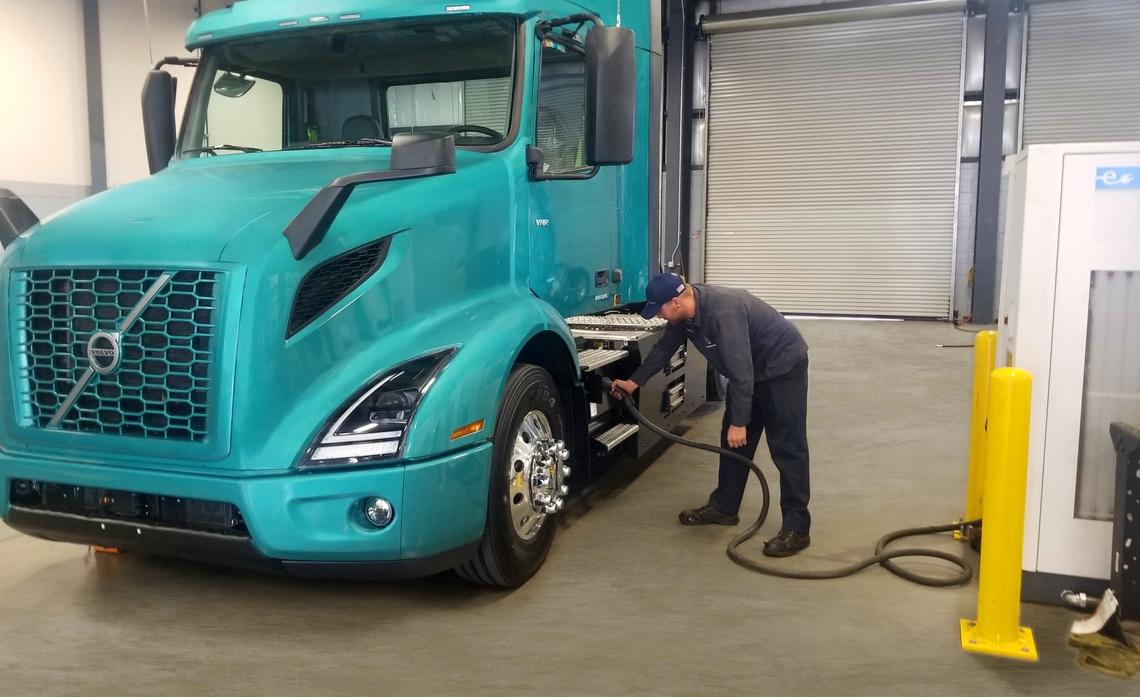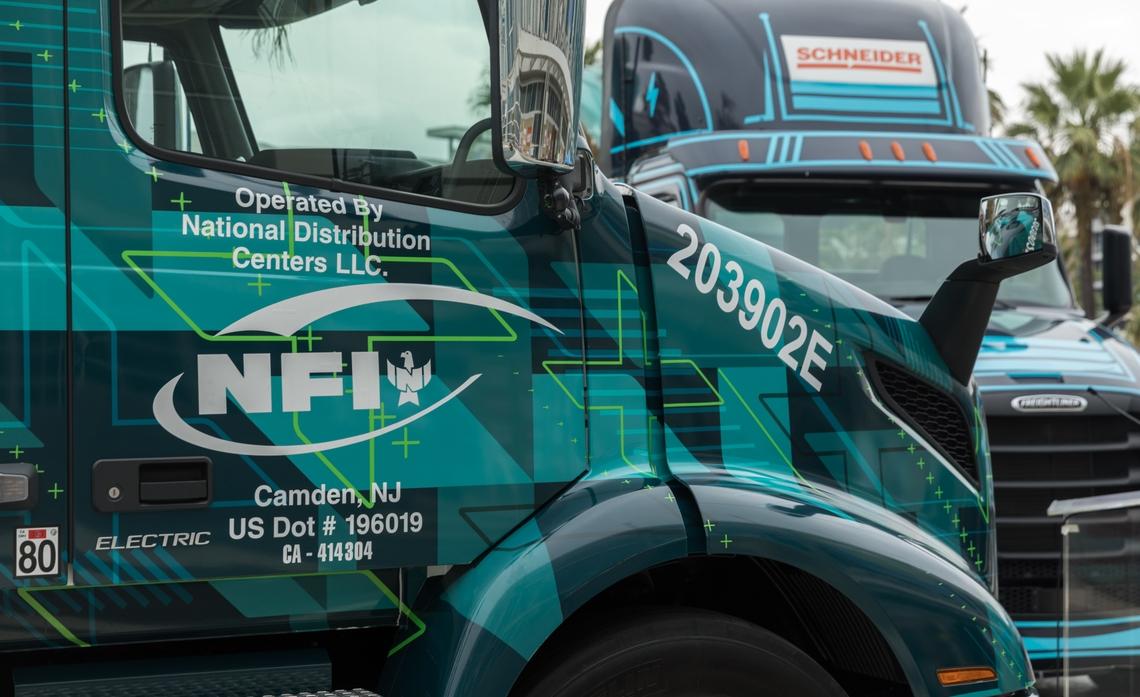SoCal Trucking Operations Shift Big Rig Electrification Into High Gear
SCE’s Charge Ready Transport program will provide EV charging for 100 electric trucks, eliminating 8,200 metric tons of harmful emissions annually.
While many fleet operators are test-driving electric big rigs, Southern California Edison is helping two of its customers shift the electrification of their local fleets into high gear.
Transportation and logistics companies NFI Industries Inc. of Camden, N.J. and Schneider National, Inc. of Green Bay, Wisconsin recently announced that they will each put 50 heavy-duty, plug-in, battery-electric trucks into operation at their Los Angeles-area locations.
NFI and Schneider are participating in an initiative led by the South Coast Air Quality Management District to begin using 100 battery-electric trucks for regional hauls and for drayage, or the transportation of goods from ports to nearby warehouses.
“We are proud to be a part of this historic initiative in Southern California,” said South Coast AQMD board member Gideon Kracov. “The agency has always been a leader in innovative collaborations that help advance zero-emission transportation and protect the health of our communities.”
The California Joint Electric Truck Scaling Initiative, as it’s formally known, is the largest deployment of heavy-duty, battery-electric trucks in North America to date. It is being funded with $27 million from the California Air Resources Board and the California Energy Commission, $5.4 million from the South Coast AQMD, as well as $41.4 million in funding from project partners, including SCE.
“What we’re going to demonstrate is that we can put 50 battery-electric vehicles into our intermodal operations here in Southern California and execute that effectively,” Rob Reich, executive vice president and chief administrative officer for Schneider, said at a press conference announcing the initiative at the Advanced Clean Transportation Expo in Long Beach.
“And not only is it important for our mission here in Southern California, but it will inform us and teach us how we can deploy more battery-electric vehicles across the country,” Reich said.
An important takeaway from the initiative, participants say, will be lessons learned about installing the infrastructure needed to charge so many trucks.
“We’ll be putting in the largest high-powered charging infrastructure site in Ontario for our drayage fleet,” said Bill Bliem, senior vice president of fleet services for NFI. “We’re really excited about getting this project going and bringing zero-emission, battery-electric vehicles to the next level.”
SCE, which provides electrical service to both locations, is currently working with the two trucking companies to determine how best to configure their charging stations. The utility has also committed up to $5 million toward the installation of EV charging at the two sites through its Charge Ready Transport program, which helps fleet owners pay for EV charging infrastructure for medium- and heavy-duty EVs. Charge Ready offers customers significant construction and logistical support as well.
“This is a great opportunity to collaborate with companies that are making a large commitment to fleet electrification, and we're actively working with them to identify the necessary distribution upgrades and the on-site infrastructure needed to complete their projects,” said Simon Horton, a senior project manager with SCE.
Schneider will add 50 electric trucks from Daimler Trucks North America to its South El Monte location, and NFI will take delivery of 30 electric drayage trucks from Daimler and 20 from Volvo Trucks North America at its Ontario campus.
The truck routes will be in and around environmentally impacted communities near highways, warehouses and intermodal rail yards that serve the twin ports of Los Angeles and Long Beach. Diesel particulate matter in these areas exposes community members to greater risk of respiratory diseases and other health conditions that can shorten their lifespan.
It is estimated that the equivalent of 5.5 million gallons of diesel fuel will be displaced over the eight-year project, eliminating five tons of harmful criteria pollutants such as carbon monoxide and particulate matter and reducing greenhouse gas emissions by 8,200 metric tons each year.
The electric truck initiative is also expected to boost the regional economy by nearly $17 million. The construction phase alone could generate the equivalent of approximately 180 new full-time jobs in design and engineering, construction and project management.
The project’s more than 20 partners also include the ports of Long Beach and Los Angeles, as well as state and local energy, environmental and transportation authorities, corporations and non-government organizations.






